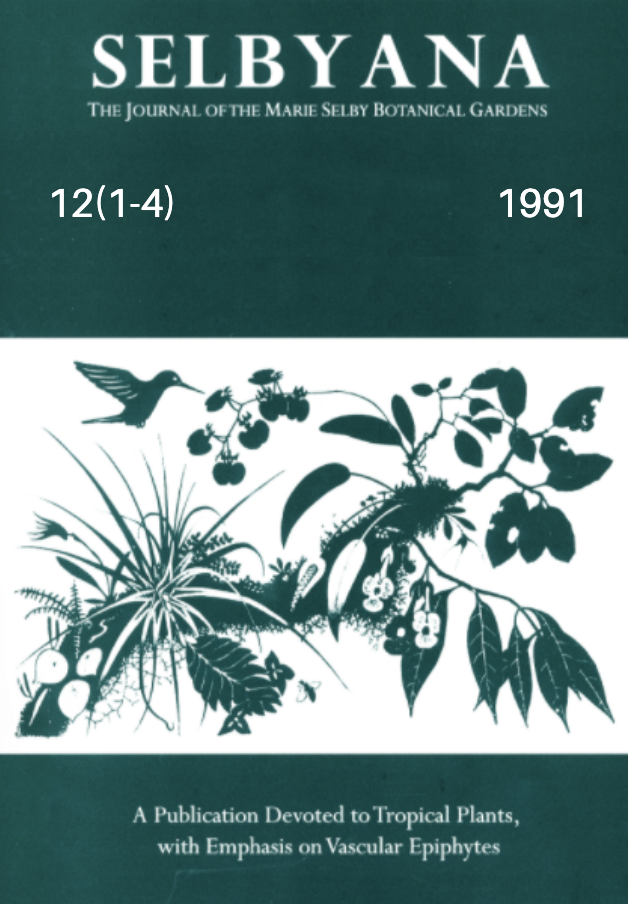Abstract
Published infrageneric classifications ofCoccothrinax are based only on Cuban species. To provide an inclusive categorization ofprovisional infrageneric groupings for easy recognition in future field and herbarium studies, we compared all species in the genus with statistical, phenetic, and cladistic techniques. Statistical analyses indicated that 22 of160 characters extracted from the published literature would be useful for phenetic and cladistic analyses. Phenetic analyses produced three distinct clusters of taxa. Cladistic analyses suggested that two ofthe phenetic clusters are paraphyletic and the third is monophyletic. The two paraphyletic clusters were also more plesiomorphic than the monophyletic cluster. Cladistic analyses further indicated that most ofthe 22 characters were highly homoplasious, and only the following were reliable for classificatory purposes atthe infrageneric level: loss oftransverse veins in the leaf, elongation of the leaf sheath strands, fusion of sheath strands into spine-like processes, and tan, corky fruits. The recognizable groups are as follows: Argentea Group (1 complex, 6 spp., paraphyletic); Argentata Group (2 complexes, 10 spp., probably paraphyletic)-C argentata complex (8 spp., paraphyletic), C crinita complex (2 spp., monophyletic); and Pauciramosa Group (4 complexes, 31 spp., probably monophyletic)-G. miraguama complex (11 spp., probably monophyletic), C pauciramosacomplex (11 spp., paraphyletic), Haitiella
complex (2 spp., monophyletic), species incertae sedis (7 spp.).
Open Access and Copyright Notice
Selbyana is committed to real and immediate open access for academic work. All of Selbyana's articles and reviews are free to access immediately upon publication. There are no author charges (APCs) prior to publication, and no charges for readers to download articles and reviews for their own scholarly use. To facilitate this, Selbyana depends on the financial backing of the Marie Selby Botanical Gardens, the hard work and dedication of its editorial team and advisory board, and the continuing support of its network of peer reviewers and partner institutions.
Authors are free to choose which open license they would like to use for their work. Our default license is the Creative Commons Attribution-NonCommercial 4.0 (CC BY-NC 4.0). While Selbyana’s articles can be copied by anyone for noncommercial purposes if proper credit is given, all materials are published under an open-access license with authors retaining full and permanent ownership of their work. The author grants Selbyana a perpetual, non-exclusive right to publish the work and to include it in other aggregations and indexes to achieve broader impact and visibility.
Authors are responsible for and required to ascertain that they are in possession of image rights for any and all photographs, illustrations, and figures included in their work or to obtain publication or reproduction rights from the rights holders. Contents of the journal will be registered with the Directory of Open Access Journals and similar repositories. Authors are encouraged to store their work elsewhere, for instance in institutional repositories or personal websites, including commercial sites such as academia.edu, to increase circulation (see The Effects of Open Access).
